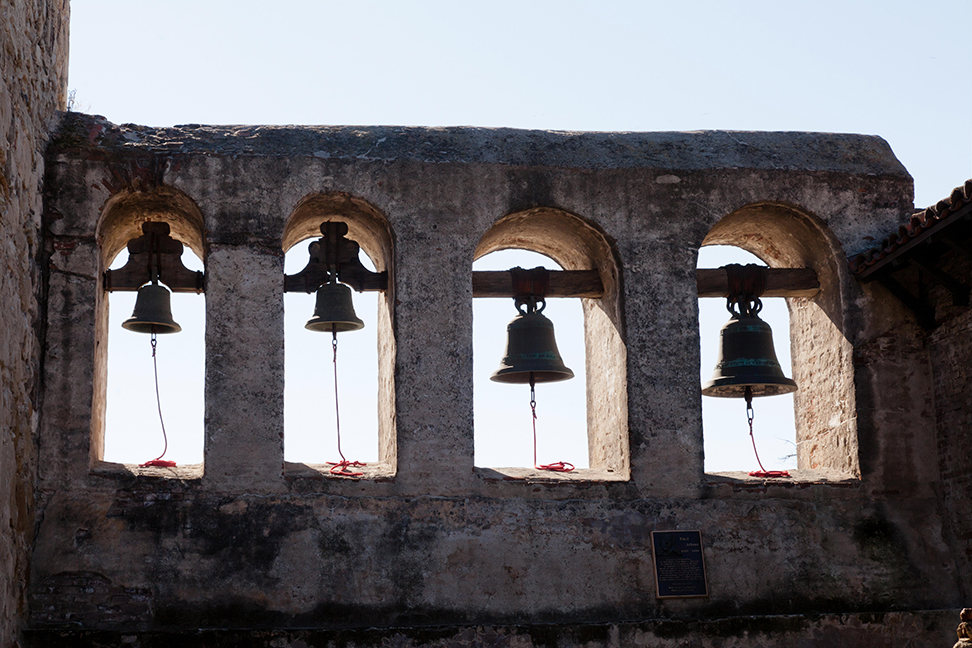Everyone knows the United States is a driving force in the wine industry. Many assume that early wine production in California began in the famous Napa Valley but that’s simply not the case. Early wine production actually started in Southern California, in what is now “The City of Angels,” or Los Angeles.
“California Wine” in the nineteenth century meant Los Angeles’ wine. In the mid-1800s, before the existence of the massive city we know, and before California was even a state in the union, most of the greater Los Angeles area was under vine. Grapevines covered the land from what is now the Downtown to Boyle Heights to Glendale, Pasadena, and beyond. At the time, the majority of the population lived in what was known as the “pueblo” or “city,” near downtown Los Angeles’ Olvera Street. But the history goes back even further than that.
Spanish missionaries, including Father Junipero Serra, arrived in California in1769, bringing with them vine cuttings of a Spanish grape, which today has come to be known as the “Mission” grape. In addition to establishing Christianity and the Catholic Church in the New World, the missionaries were farmers who skillfully cultivated the vines in order to produce a sweet, sacramental red wine.

In 1778, the first grapevines were planted in San Juan Capistrano. The Mission grape made its way across California via the missionaries and eventually wound up at the Mission San Gabriel. A tangible link to the Mission Era of our state’s glorious history, the Mission grapevine is older than the state of California itself.
The original vine cuttings led to widespread planting of grapevines all across Southern California. With its warm climate and ample sunshine, Southern California was the perfect environment for viticulture. When California became a state in 1850, Los Angeles already had more than 100 working vineyards. Eventually sweet wine production was abandoned in favor of dry wine. By 1860, the Los Angeles area was producing nearly 170,000 gallons of wine per year.
Downtown Los Angeles was the hub of wine production in the mid-century. French wine producer, Jean-Louis Vignes (ironically, “vignes” is the French word for “vines”), owned “El Aliso,” a large-scale commercial winery on the site of what is now Los Angeles’ beloved Union Station. Famous Olvera Street restaurants, La Golondrina and El Paseo, were originally wineries. Olvera Street itself was initially called “Calle de los Vignes,” or “Vine Street,” and renamed in 1877. Historic old grapevines still grow on Olvera Street, dating back more than 150 years.
The Mission grape itself evolved into a hybrid of the original European grape and a native California grape. Jean Louis Vignes of El Aliso was not impressed by the quality of the wine crafted from the Mission grape and eventually began cultivation of French Cabernet Sauvignon and Sauvignon Blanc.
As Los Angeles wine was palatable, cheap, and plentiful, it grew quite popular with the wine-drinking immigrants flowing across the border. There was an eager market at hand. Los Angeles wine production was booming and would likely still be a dominant force in wine production today, if not for the arrival of Pierce’s Disease (first called “Anaheim Disease”), and the Gold Rush.
Pierce’s Disease, an insect-borne bacterial infection which still exists today, drove many wine producers to financial ruin, as hundreds of vineyards in Los Angeles were destroyed seemingly overnight. The vineyard land was replanted with the signature citrus trees with which most Angelenos are familiar.
The few wineries that continued in Los Angeles were effectively put out of business with the advent of Prohibition. Only the San Antonio Winery (founded by an Italian immigrant) survived, due to a lucrative contract forged with the powerful Catholic Church, allowing the winery to produce sacramental wine. Ironically, the San Antonio Winery’s production actually increased during the ill-fated Temperance Movement.
The Gold Rush forced wine production north, up to regions of Northern California, as the demand for wine from the immigrant gold miners and their families surged. Los Angeles wine was replaced by wine from the Sierra Foothills, Napa, and Sonoma.
Today world-class wine is produced all over the state of California, from Napa and Sonoma to the Sierra Foothills and Mendocino, the foggy hills of Monterey to Santa Barbara, Malibu, Temecula, and beyond. While there is still some wine production existing in Los Angeles, it is merely a drop in the bucket of what once was the original hub of the state of California’s production.
The fine wines of California can be found at your favorite restaurants, bars, and wine shops. Ask for them by name. Try a wine from a region new to you! There is a rainbow of choices available. Find out first-hand why California continues to excel in quality wine production.
Cheers!
Leave a Reply